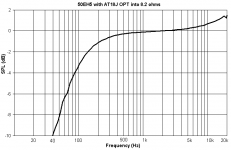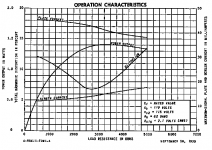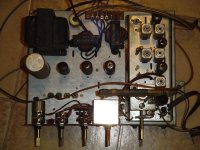You can't remove the cathode resistor unless you replace it with some form of fixed bias as in batteries or a small negative supply to the control grid. The cathode resistor provides the operating bias for the tube and without bias the tube will quickly die due to excessive dissipation.
Note that eliminating the cathode bypass capacitor will degrade linearity in the midrange and treble as well as reduce the sensitivity.
Given the quality of the output transformer in this design it is unlikely that you can't find a far better quality even electrolytic capacitor... If you are really that phobic about the quality of that capacitor use an inexpensive blackgate and/or try bypassing with a good quality film type.
If you insert nicad/nimh batteries in the cathode circuit normal operating currents will keep them fully charged. Under no circumstances should you ever use an alkaline or conventional carbon drycell as they will leak and quite possibly explode. I can't emphasize this enough.
If you choose to use a negative bias on the grid regular batteries may be employed and these will periodically have to be replaced. (every few years)
Note that eliminating the cathode bypass capacitor will degrade linearity in the midrange and treble as well as reduce the sensitivity.
Given the quality of the output transformer in this design it is unlikely that you can't find a far better quality even electrolytic capacitor... If you are really that phobic about the quality of that capacitor use an inexpensive blackgate and/or try bypassing with a good quality film type.
If you insert nicad/nimh batteries in the cathode circuit normal operating currents will keep them fully charged. Under no circumstances should you ever use an alkaline or conventional carbon drycell as they will leak and quite possibly explode. I can't emphasize this enough.
If you choose to use a negative bias on the grid regular batteries may be employed and these will periodically have to be replaced. (every few years)
50EH5 Measurements
I finally got around to measuring my 50EH5 project. Attached is the frequency response from 40Hz to 20kHz into 8.2 ohms.
Basically, the amp is -3dB @ 100Hz and about +1dB @ 20kHz.
The response is about what I expected from these tiny OPTs. The plan for this amp is to power a radio shack super tweeter.
Is there any way to measure the response of an output transformer without having it connected to an amp?
Cheers,
Gio.
I finally got around to measuring my 50EH5 project. Attached is the frequency response from 40Hz to 20kHz into 8.2 ohms.
Basically, the amp is -3dB @ 100Hz and about +1dB @ 20kHz.
The response is about what I expected from these tiny OPTs. The plan for this amp is to power a radio shack super tweeter.
Is there any way to measure the response of an output transformer without having it connected to an amp?
Cheers,
Gio.
Attachments
Re: 50EH5 Measurements
Gio,
It looks like it would also be good as a "main" amp connected to a subwoofer to supply the low end.
GG said:I finally got around to measuring my 50EH5 project...
Basically, the amp is -3dB @ 100Hz and about +1dB @ 20kHz.
...The plan for this amp is to power a radio shack super tweeter.
...
Cheers,
Gio.
Gio,
It looks like it would also be good as a "main" amp connected to a subwoofer to supply the low end.
Re: Re: 50EH5 Measurements
It would be ok, the problem is I don't have a suitable (efficient) 8 ohm speaker. With the 8ohm 2.5k OPT, this amp sounds horrible into 4 ohms and even worse into 16ohms!
Check out the attached graph.
The volume control will let me adjust the tweeter seperately from the preamp and into an 8 ohm supertweet @ 97dB, the low power is not an issue.
Cheers,
Gio.
Sherman said:
It looks like it would also be good as a "main" amp connected to a subwoofer to supply the low end.
It would be ok, the problem is I don't have a suitable (efficient) 8 ohm speaker. With the 8ohm 2.5k OPT, this amp sounds horrible into 4 ohms and even worse into 16ohms!
Check out the attached graph.
The volume control will let me adjust the tweeter seperately from the preamp and into an 8 ohm supertweet @ 97dB, the low power is not an issue.
Cheers,
Gio.
Attachments
Re: 50EH5 Measurements
The rise in the top may well be a sign of some ringing in the OPT... adding an appropriately sized (small) cap shunting the primaries is a tactic often used to counter this.
dave
GG said:about +1dB @ 20kHz.
The rise in the top may well be a sign of some ringing in the OPT... adding an appropriately sized (small) cap shunting the primaries is a tactic often used to counter this.
dave
GG said:When I go to a thrift store, there is almost always an old Tube Stereo Console available for $7 to $25 CDN.
You are sooooo lucky!!!!!

The thrift stores in Abbotsford/Chilliwack *know* what they have and price accordingly 😡
I just picked up the radio portion of a Sears console on fleabay. It sports a pair of single ended output amps using 25F5s It's all series string with a "sudden death" non-isolated chassis. I was thinking of refurbing this thing with an isolation transformer (a 50-100VA isolation transformer is cheap locally) and various improvements and dropping it into a wood box with some open baffle arrays. I have a bunch of oval Samsung TV speakers that may be just the thing it needs to see.
Grundig Console 2xECL86
I have A Grundig stereo console like the one shown at the beginning of this thread, I don't have a clue how to wire up the output but it looks to be in very good shape.
All the parts and tubes are there including the cable & plug for the speakers that would have been inside the cabinet, but I still only have the console.
Does anyone have a diagram or output wiring suggestions so that I can hook up a pair of 8 ohm speakers to test the console? 😀
I have A Grundig stereo console like the one shown at the beginning of this thread, I don't have a clue how to wire up the output but it looks to be in very good shape.
All the parts and tubes are there including the cable & plug for the speakers that would have been inside the cabinet, but I still only have the console.
Does anyone have a diagram or output wiring suggestions so that I can hook up a pair of 8 ohm speakers to test the console? 😀
Hi,For interests sake, here is the Viking with ECL86
BTW - what is an RH Circuit?
Gio.
I know this message is around 6 year late, but I knoticed the console Viking ECL86 amp pic the other day and it appears to be the same amplifier that I recently pick up. Like you, I had pick it up next to nothing and I was hoping to use it as my introduction to the world of diy. I do have a couple of questions that I was hoping you may be able to help me with.
I'm not actually clear who manufactured it as it doesn't seem to indicate. Would you know the manufacturer and model number. Is it worthwhile converting this into a stand alone tube amplifier. What would the power rating be for it. Any ideas as to where I can get my hands on the schematic.
Lastly, did you end up doing anything with the one in the pic.
Thanks,
Viking was an Eatons house brand. They'd contract a furniture maker to make the consoles, and those would buy amplifiers from an OEM. Even if we knew who, their name probably wouldn't be recognizable.
dave
dave
Thanks Dave for your reply. You're certainly right about this amps anonimity. I can't seem to find any label that points to a manufacturer. There is an ink stamp indicating RCS 602 but I believe that's the Viking model and not an indication of the manufacturer. For what it's worth here's a picture of the amp.
Thanks
Thanks
Attachments
That's a receiver. All the stuff to the right of the photo is RF related. What are the tubes in line leading from the big can at the photo's left? I'm going to guess a 12AX7 and 2X 6BQ5/EL84s.
The power trafo seems fairly substantial but the O/P "iron" looks puny.
The power trafo seems fairly substantial but the O/P "iron" looks puny.
Eli,
The ECL86 was referenced, which would make the twin triode extraneous, unless it is there to recover gain from tone controls, so you may be right.
I have had those (or similar) OPTs thru here.They are smallish, but still good for a 1st tube amp build -- say an RH84.
dave
The ECL86 was referenced, which would make the twin triode extraneous, unless it is there to recover gain from tone controls, so you may be right.
I have had those (or similar) OPTs thru here.They are smallish, but still good for a 1st tube amp build -- say an RH84.
dave
A friend found a very similar console made by Philips. Same tube complement, using the European tube names rather than the US names we usually see in Canada. My guess is that Philips is the mystery OEM here. Pretty darn punchy little system for 2-3 watts.
..Todd
..Todd
Last edited:
Anything bought in Canada was likely (mostly) made in Canada, as duties were huge. Philips went a bit further than others: Rogers for instance was a Philips owned tube manufacturer and duties could be escaped by labeling tubes as Rogers, even if made overseas -- an occasional Mullard to be found.
A lot of local manufactures were kept in business making stuff for foreign companies. RSC made speakers for Jensen amoungst others, one RSC to keep an eye out for is a deep 8" sporting cones made by isophon in Germany.
dave
A lot of local manufactures were kept in business making stuff for foreign companies. RSC made speakers for Jensen amoungst others, one RSC to keep an eye out for is a deep 8" sporting cones made by isophon in Germany.
dave
Thanks Dave for your reply. You're certainly right about this amps anonimity. I can't seem to find any label that points to a manufacturer. There is an ink stamp indicating RCS 602 but I believe that's the Viking model and not an indication of the manufacturer. For what it's worth here's a picture of the amp.
Thanks
Hi stumbled across this doing some digging. I have the same unit, actually two. 6CA4 rectifier and 2X 6GW8. on the output side of things. It is an Electrohome made unit. Console Model# escapes me.
i just got one from a friend of ours and i think it's really cool... my mom had one back in the 70's...itching to learn how they work.
fleetwood record cabinet console
how can i get better FM reception on my unit? It's in a basement and keeps fading in and out, the antenna on the back looks a little old and frayed. Any ideas?
how can i get better FM reception on my unit? It's in a basement and keeps fading in and out, the antenna on the back looks a little old and frayed. Any ideas?
hey what kind of work area do you have to do this stuff and what are the main tools you use? thanks
- Status
- Not open for further replies.
- Home
- Amplifiers
- Tubes / Valves
- Tube Stereo Consoles from Thrift Stores


